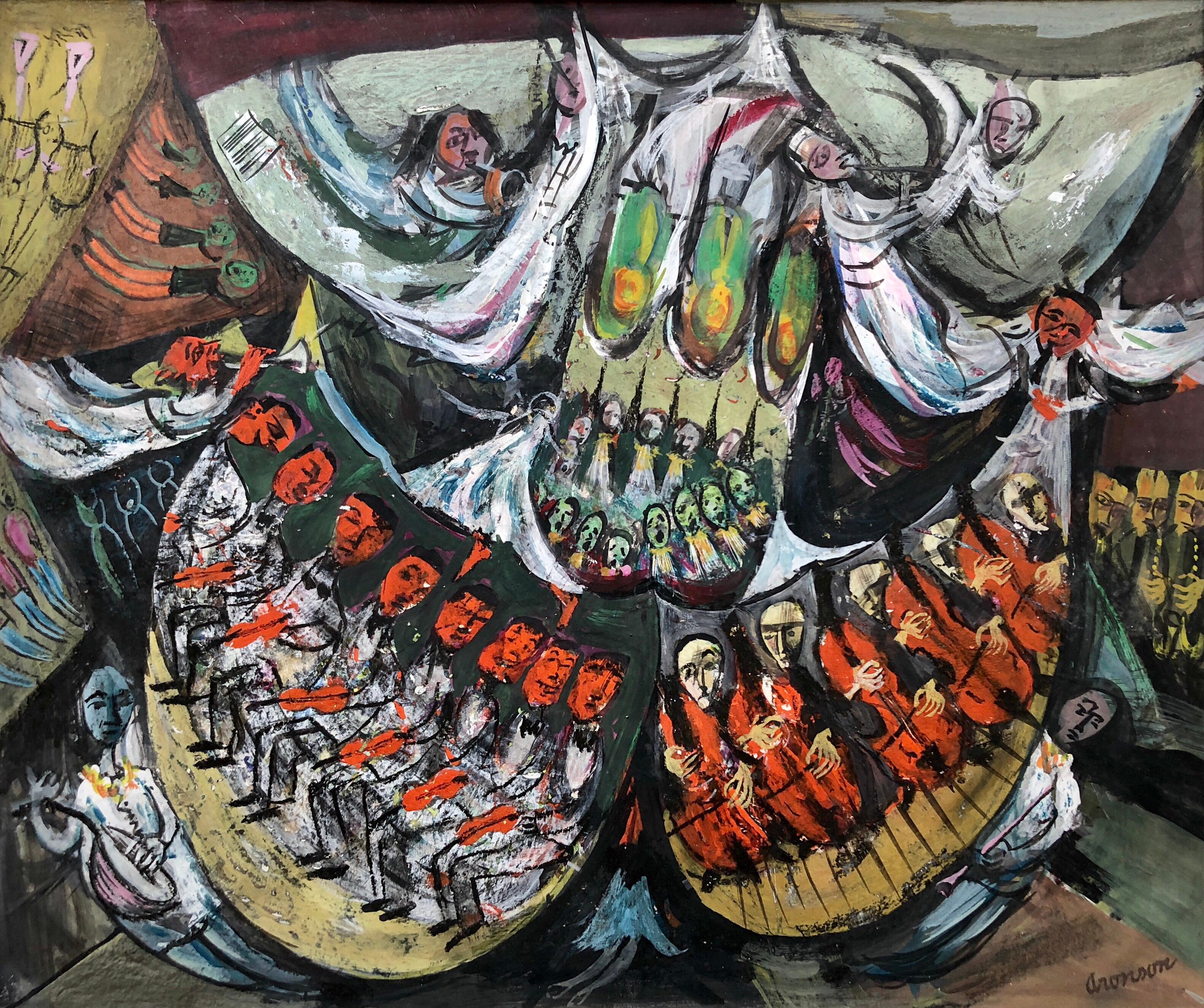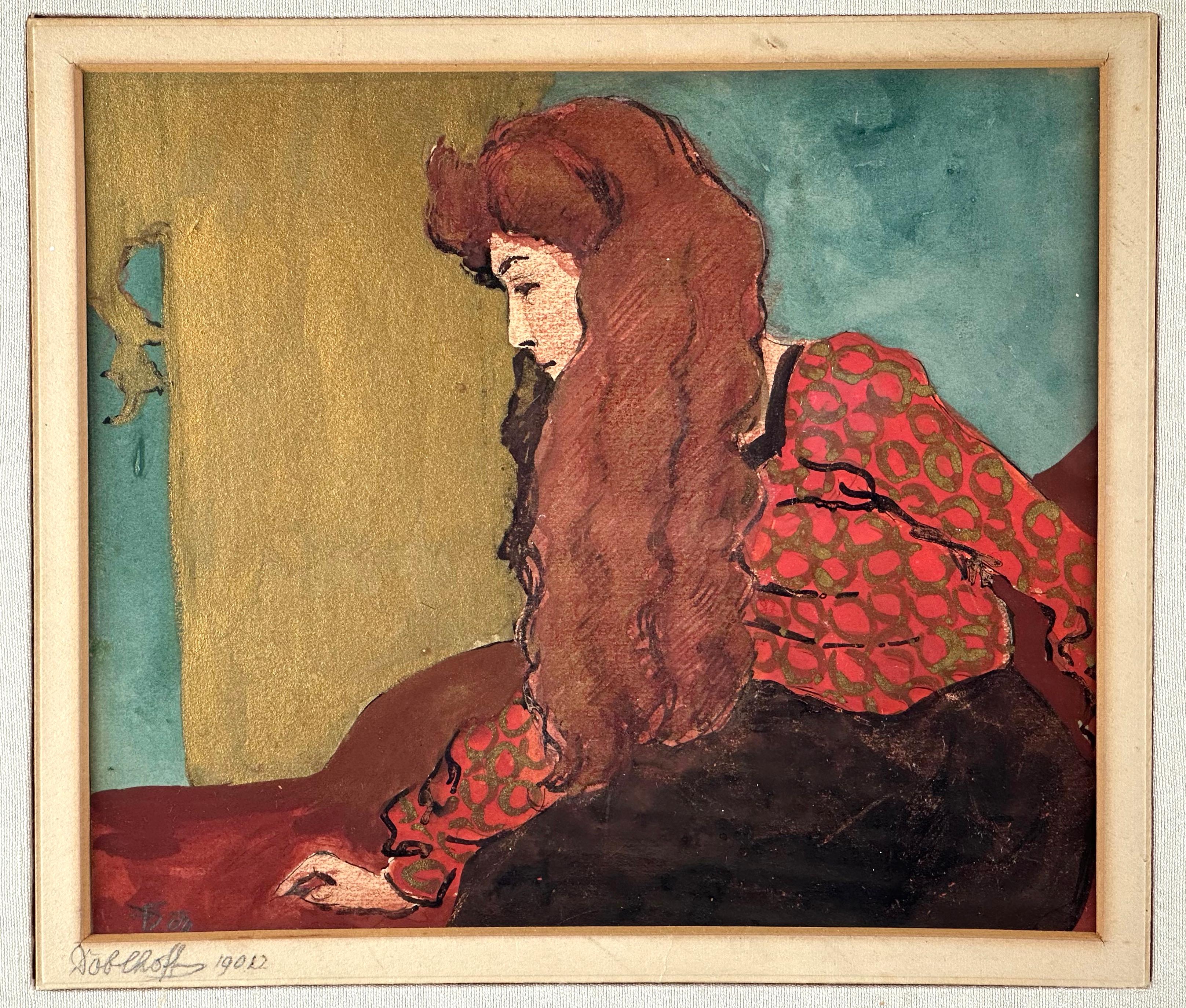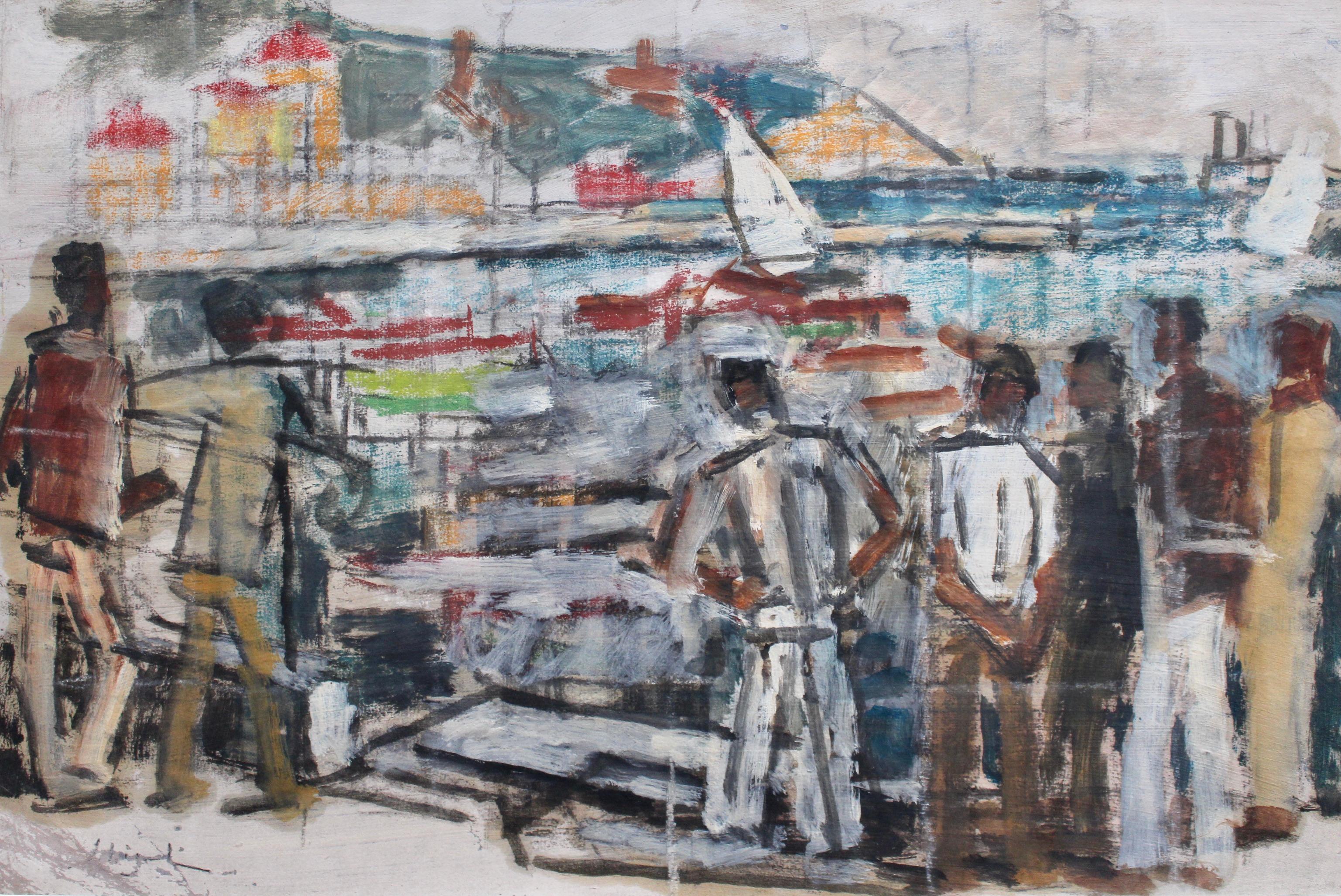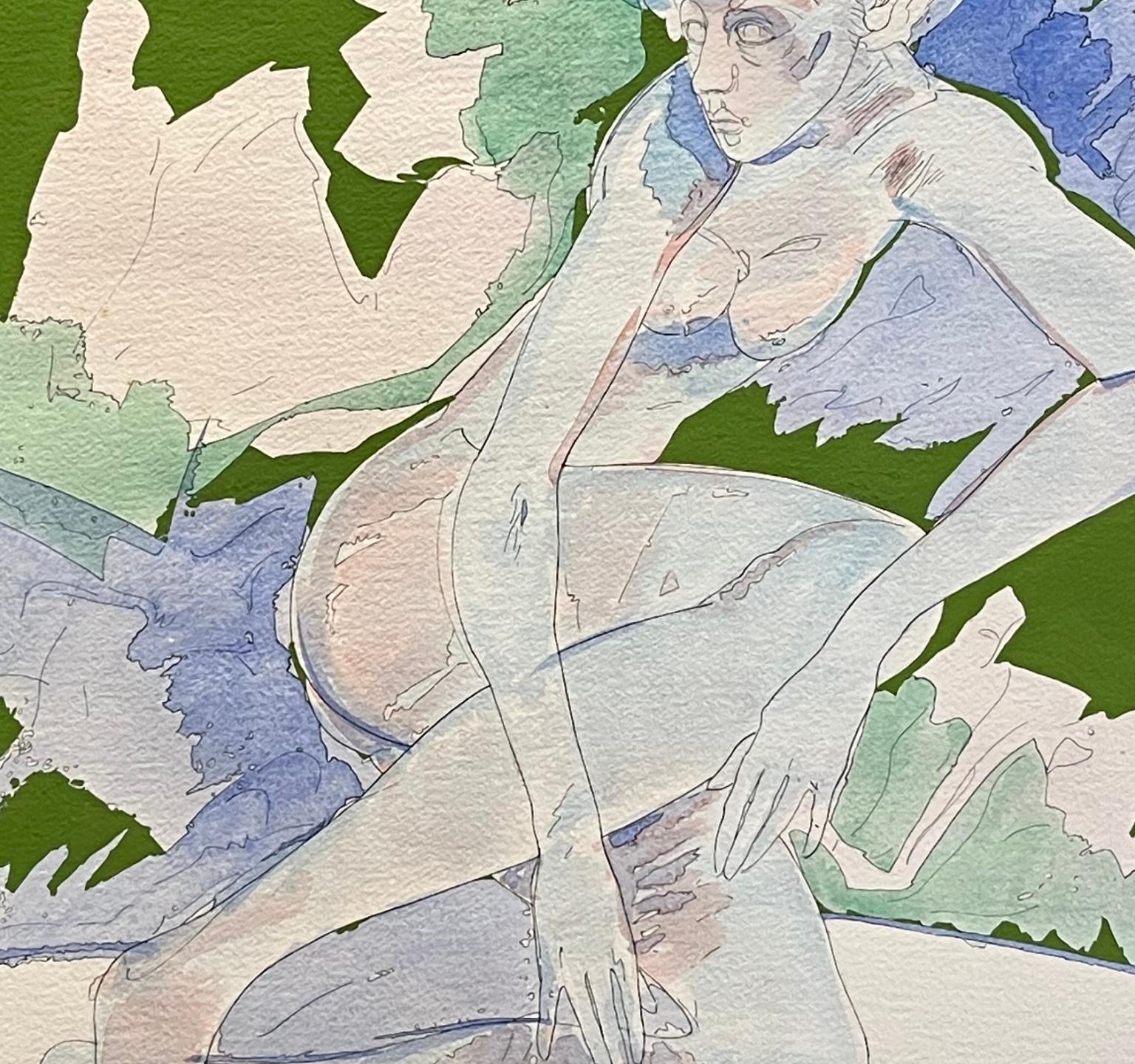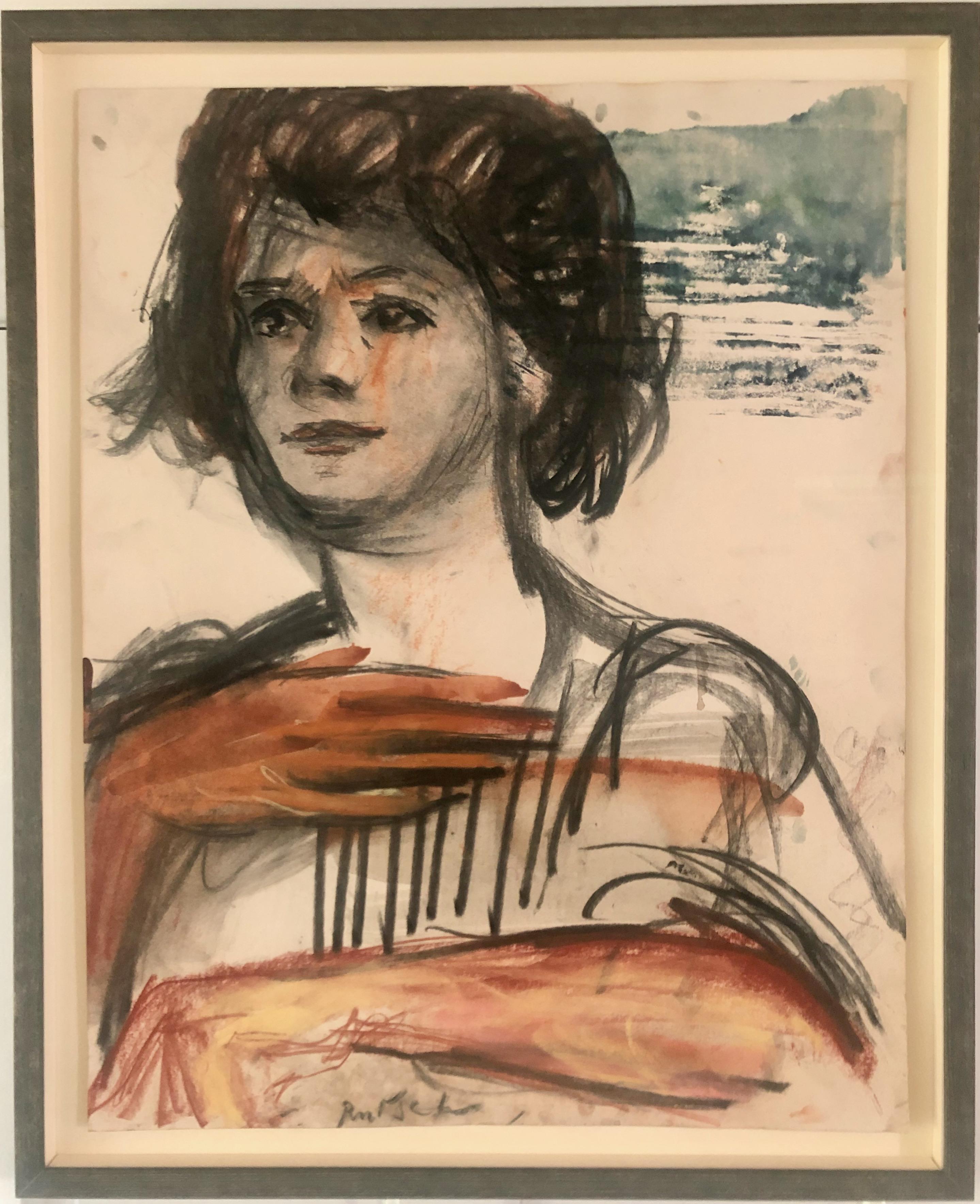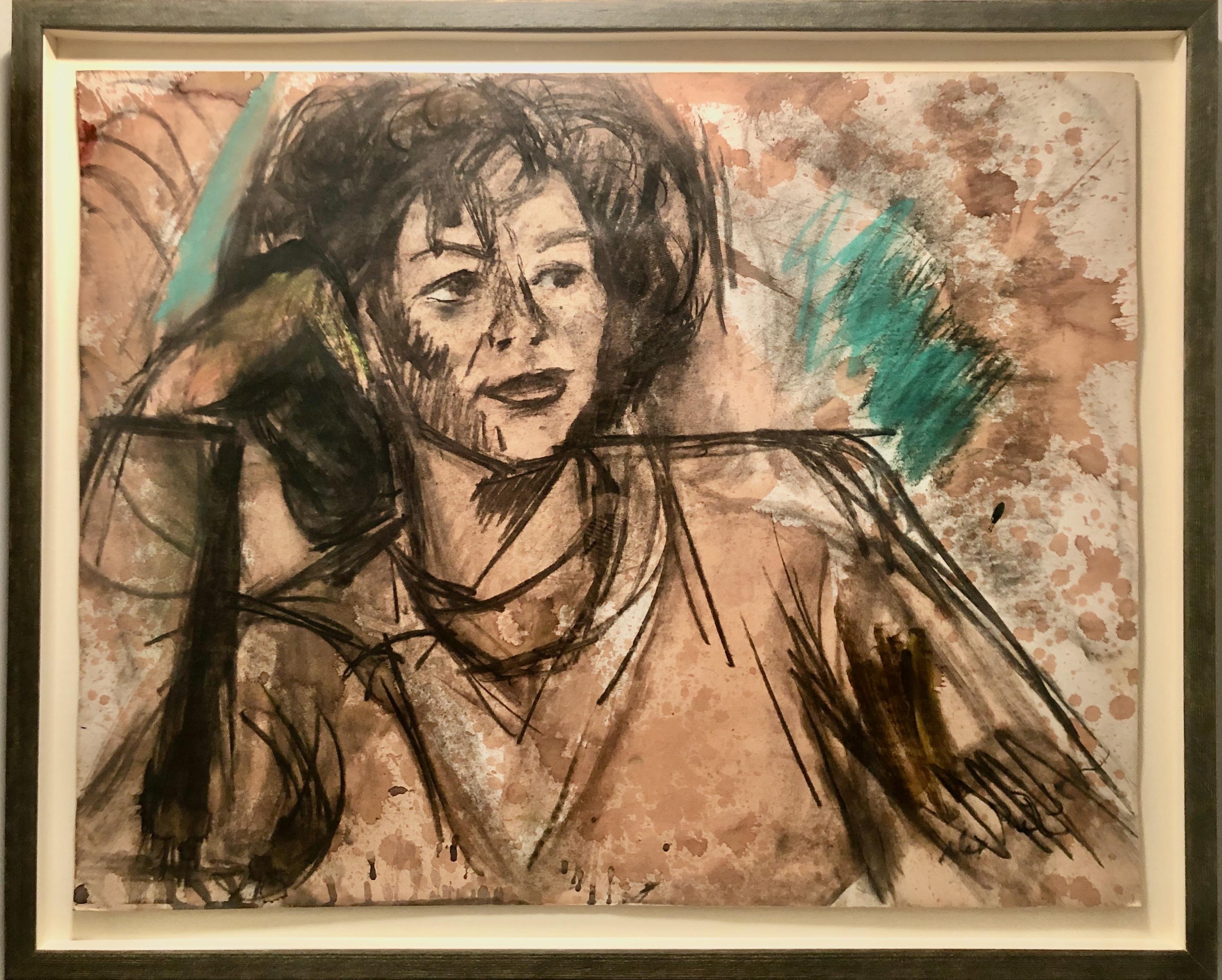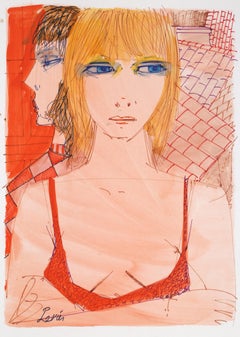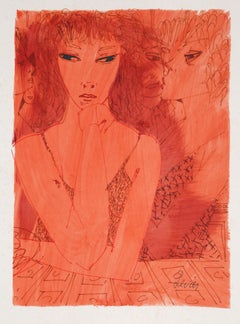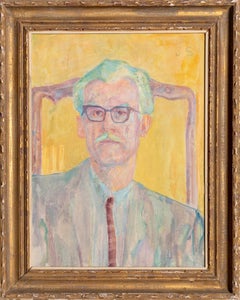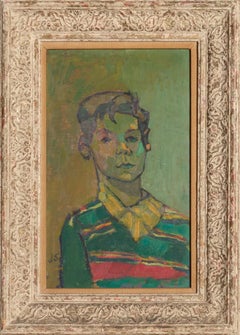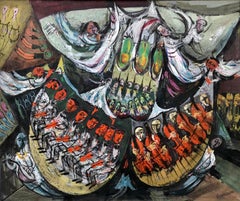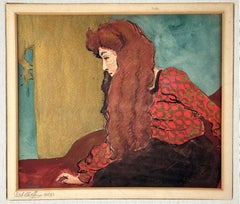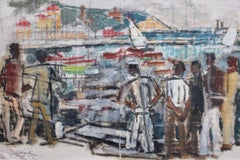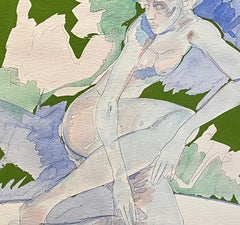Charles LevierBlonde in Red Swim Suit, Expressionist Watercolor by Charles Leviercirca 1960
circa 1960
About the Item
- Creator:Charles Levier (1920-2003, French)
- Creation Year:circa 1960
- Dimensions:Height: 25 in (63.5 cm)Width: 19.5 in (49.53 cm)
- Medium:
- Movement & Style:
- Period:
- Framing:Framing Options Available
- Condition:Minor wear consistent with age and history.
- Gallery Location:Long Island City, NY
- Reference Number:1stDibs: LU4663329051
Charles Levier
Charles Levier was born on January 26, 1920, in Corsica. He was the son of a French father and an American mother. He held a fascination with color and form that led him, at age 17, to the École Nationale Supérieure des Arts Décoratifs in Paris for private studies. World War II came along and Levier served in the French Army in North Africa, later becoming Liaison Officer with the U.S. Office of Strategic Services. Paintings by Levier can be found in countless private and public collections. Among those collectors are Mr. and Mrs. Peter Lawford, Frank Sinatra, Adlai Stevenson, Baron Edmond de Rothschild, Prince and Princess Poniatowski, Mrs. Dan Topping, Mr. and Mrs. Dean Martin and many others. Levier died in 2003.
- ShippingRetrieving quote...Shipping from: Long Island City, NY
- Return Policy
More From This Seller
View All1970s Expressionist Portrait Paintings
Watercolor
1970s Expressionist Portrait Paintings
Watercolor
1960s Expressionist Portrait Paintings
Oil, Canvas
1960s Expressionist Portrait Paintings
Masonite, Oil
1960s Expressionist Portrait Paintings
Oil, Masonite
1960s Expressionist Portrait Paintings
Mixed Media, Oil, Board, Pencil
You May Also Like
20th Century Expressionist Figurative Paintings
Gouache, Board
Early 20th Century Vienna Secession Portrait Paintings
Ink, Watercolor
1950s Expressionist Mixed Media
Paper, Pastel, Oil, Gouache
Early 2000s Expressionist Portrait Paintings
Paper, Ink, Watercolor
1980s Expressionist Portrait Paintings
Charcoal, Oil Pastel, Watercolor, Archival Paper
1980s Expressionist Portrait Paintings
Watercolor, Charcoal, Oil Pastel
Recently Viewed
View AllRead More
Romare Bearden’s Humanity Infuses His Bright, Bold Art
Through collage, painting and printmaking, the artist foregrounded Black life in America in revolutionary new ways.
Chryssa’s 1962 Neon Sculpture Was Way ahead of the Art-World Curve
By working with lettering, neon and Pop imagery, Chryssa pioneered several postmodern themes at a time when most male artists detested commercial mediums.
